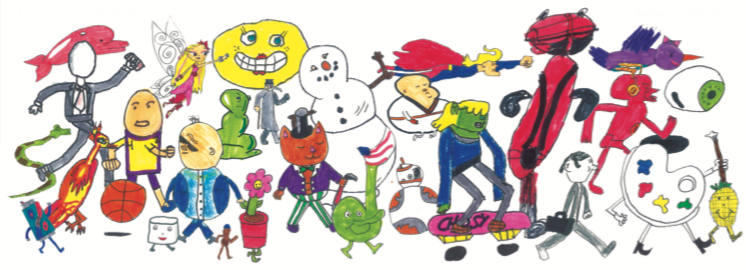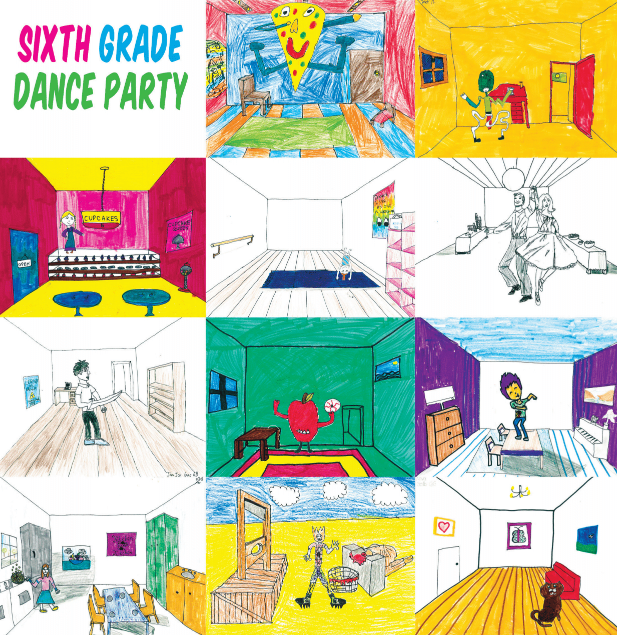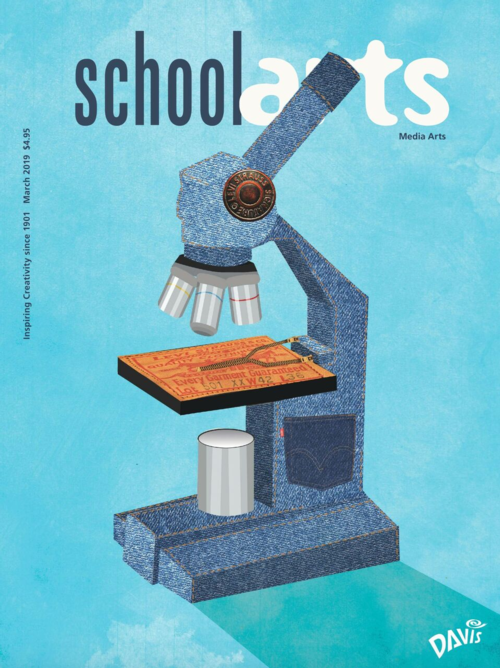 An animated cartoon parade by sixth-grade students.
An animated cartoon parade by sixth-grade students.
Personal computers were new when I was growing up. When I was in high school, a math teacher taught me how to set up a spreadsheet. When I was in college, I learned how to send an email. I had easy access to computers, but it seemed to me that even my computer teachers were just winging it. One unforgettable day, the power went out in the computer lab and twenty students did nothing while the teacher tried to figure out how to reboot our computers.
Twenty years later, my own students are learning to code in elementary school. One of their first basic programming lessons was a game. One student “programmed” a blindfolded partner to walk across the room. There was no computer necessary, but the experience was indelible. Similarly, you can teach new media concepts even if you don’t have new media tools in your classroom.
Thaumatropes
I’ve been teaching animation at my school for the past ten years. We now have access to computers, but I teach the concepts of animation long before students visit the computer lab.
Our first animation lesson is a thaumatrope. If the word isn’t familiar, you probably remember thaumatropes as two separate drawings—a bird and a cage—that are attached to a stick and spun to create the illusion of the bird sitting inside the cage. It’s a perfect illustration of the key phenomenon of animation: the persistence of vision. I’ve taught this lesson to students as young as five, but second-graders and up seem to enjoy it most.
Zoetropes
Our second lesson is a zoetrope. These are animation devices you may have seen while visiting a science museum, where you peer through spinning slots to see an eagle fly or a horse run. Children as young as seven can create handheld zoetropes using a zoetrope template, tape, a CD, and an empty lip balm tube. The project teaches students the importance of measurement, planning, timing, and patience in the creation of any animation.
This project is one of my all-time favorites. Gasps of delight make up for every frustration students might feel before their drawings start to move. Even administrators, fellow teachers, and parents are entertained by the results.
Storyboards
Now that your students understand the importance of planning their animations, they’ll appreciate the need for storyboards. Storyboards are basically comic strip versions of the movies students want to make. Discussing storyboards also provides an opportunity to explore storytelling and camera terminology. In recent years, I’ve combined this lesson with my advertising unit. Students create storyboards for their own commercials.

Artworks from students’ Sixth-Grade Dance Party
Sixth-Grade Dance Party
By the time they reach middle school, most of my students are familiar with the Sixth-Grade Dance Party, a contest in which each contributor draws a figure or two in a series of different dance positions. These drawings are used as the individual frames in a series of brief cartoons. The sixth-grade students animate their own dancing figures. They also curate and animate submissions from students in the lower grades.
This is most of my students’ first experience creating a cartoon using the computer. By the time they open their drawings in the Paint. Net app, they are already familiar with the key concepts of animation; all they have to learn is how to use the new software. Each student animates his or her own drawings. Early finishers animate the younger students’ drawings. They save all their work in a shared folder. I assemble the files in iMovie and upload them to YouTube.
The finished Dance Parties, only one or two minutes long, are forwarded to parents, grandparents, and principals at other schools. One of them even won an award at the California Student Media Festival. The best thing about the finished cartoons, though, is that they represent an exciting, shareable, digital culmination of my students’ animation lessons.
If you would like to see some of my students’ cartoons or video demonstrations of how to make thaumatropes or zoetropes, please write to me at the email address below.
Rama Hughes is an art teacher at Yavneh Hebrew Academy in Los Angeles, California, and a contributing editor for SchoolArts. rama@ramahughes.com
NATIONAL STANDARD
Presenting: Convey meaning through the presentation of artistic work.
WEB LINK
www.getpaint.net
View this article in the digital edition.


 An animated cartoon parade by sixth-grade students.
An animated cartoon parade by sixth-grade students. 
